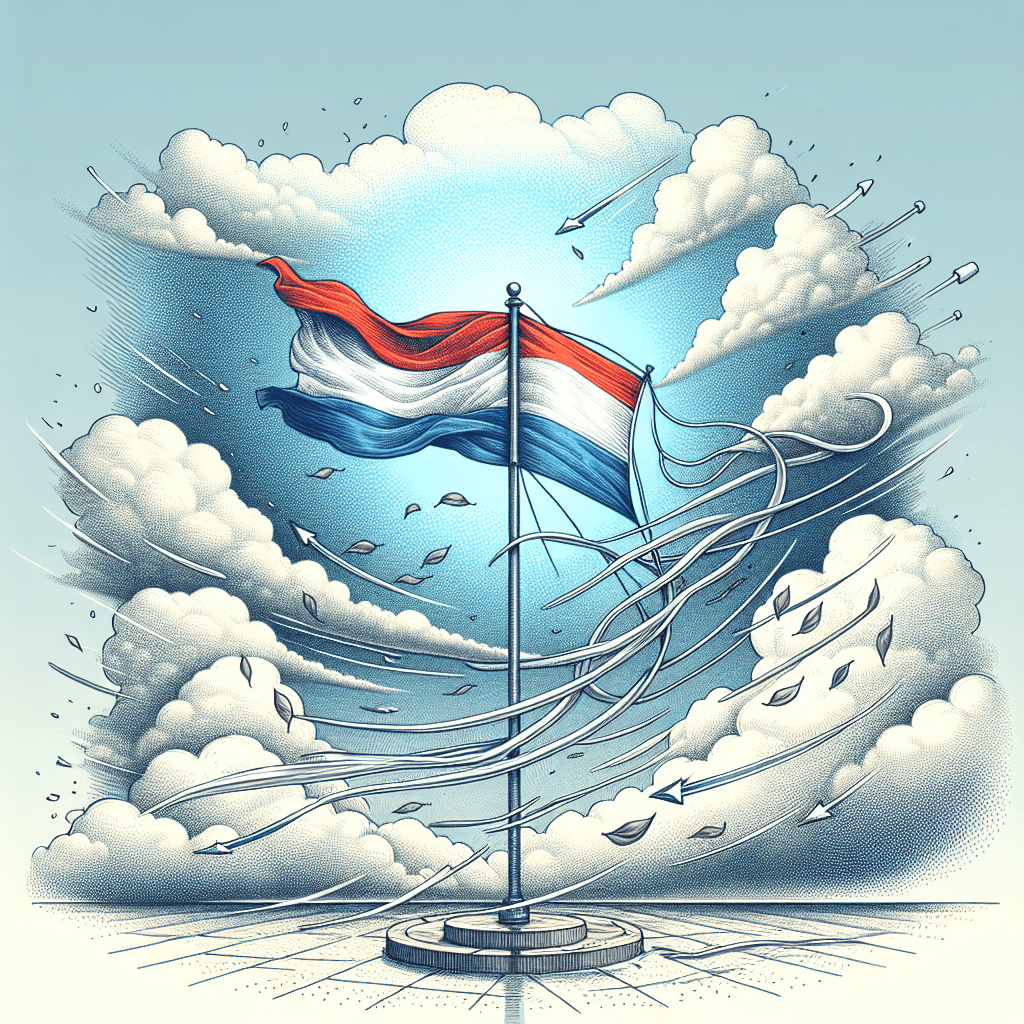Why do flags ripple in the wind instead of just flying straight
A flag's hypnotic ripple isn't just a simple reaction to the wind; it's a complex aerodynamic ballet caused by invisible, swirling vortices that form in its wake.


Too Long; Didn't Read
TLDR: The flag itself disrupts the wind, creating an unstable pressure imbalance that pushes and pulls the fabric. This starts a self-sustaining wobble that travels down the cloth as a ripple.
The Unfurled Mystery: Why Do Flags Ripple in the Wind Instead of Just Flying Straight?
Have you ever watched a flag on a windy day and wondered about its mesmerizing motion? We often see it as a symbol of patriotism or pride, but it's also a beautiful display of physics in action. A common assumption is that the wind simply pushes the fabric, but if that were the case, shouldn't it just fly straight out like a rigid board? The elegant, wave-like dance of a flag is far more complex and fascinating. This post will unravel the science behind this everyday phenomenon, revealing how a simple flagpole and the principles of fluid dynamics create the iconic ripple we all recognize.
It All Starts at the Pole
The secret to a flag's ripple doesn't begin with the fabric, but with the object it's attached to: the flagpole. When wind, which is essentially a moving fluid, encounters a stationary object like a cylindrical pole, it has to move around it. However, the air doesn't just split cleanly and rejoin perfectly on the other side. This interruption creates an unstable flow of air directly behind the pole. This initial disturbance is the catalyst for everything that follows. The seemingly insignificant pole is, in fact, the engine that drives the entire motion.
Introducing the Kármán Vortex Street
As the wind flows past the pole, it creates alternating zones of low pressure on the backside. Air is drawn into these low-pressure pockets, causing it to swirl and form tiny whirlpools, or vortices. The brilliant physicist Theodore von Kármán first described this effect in the early 20th century.
He discovered that these vortices are not shed from the pole randomly. Instead, they detach in a distinct, alternating pattern. First, a vortex will form and break away from one side of the pole, and then another will form and break away from the opposite side. This creates a staggered, downstream pattern of swirling air known as a Kármán Vortex Street. You can see a similar effect in the water when a stream flows past a rock or a bridge piling. This perfectly predictable, alternating pattern of low pressure is what makes the flag ripple.
How Vortices Make the Fabric Dance
Now, imagine the flag fabric positioned directly in this vortex street. The alternating vortices travel down the length of the flag.
- A low-pressure vortex shed from the left side of the pole travels down the flag. The fabric is pulled toward this low-pressure zone, causing it to bulge to the left.
- An instant later, a low-pressure vortex shed from the right side follows. As it moves along the flag, it pulls the fabric in the opposite direction, causing it to bulge to the right.
This continuous back-and-forth pull from the alternating vortices forces the flag into its characteristic sine-wave pattern. The speed of the wind and the diameter of the flagpole determine the frequency of the vortex shedding, which in turn dictates how fast the flag ripples. A stronger wind creates vortices more quickly, leading to faster, shorter waves in the fabric. This interaction between an object's structure and the aerodynamic forces of a fluid is a phenomenon known as aeroelastic flutter.
Conclusion
So, the next time you see a flag waving proudly in the breeze, you'll know it's not just being blown about aimlessly. It's performing a complex dance choreographed by physics. The process starts with the flagpole disrupting the airflow, creating an alternating pattern of swirling vortices called a Kármán Vortex Street. These vortices then travel down the fabric, pulling it from side to side in a predictable rhythm that we see as a ripple. Understanding this principle isn't just for appreciating flags; it is fundamental to engineering, influencing the design of everything from stable bridges to efficient aircraft wings. It’s a powerful reminder that incredible science is often hidden in the most common sights.
More Articles

What creates the warm crackle sound unique to vinyl records?
That iconic warm crackle is more than just dust and nostalgia—it's the sound of a microscopic story of friction and physics being told in real-time.

Why do some insects build and wear a backpack made from the corpses of their victims?
For some of nature's tiniest predators, the best defense is a grisly offense—building a protective shield from the corpses of their vanquished prey.

Why are Earth's deserts not random, but aligned in two distinct belts?
It’s not a coincidence that the world's great deserts are aligned in two perfect bands; they are the direct creation of massive, invisible rivers of air that perpetually circle the globe.